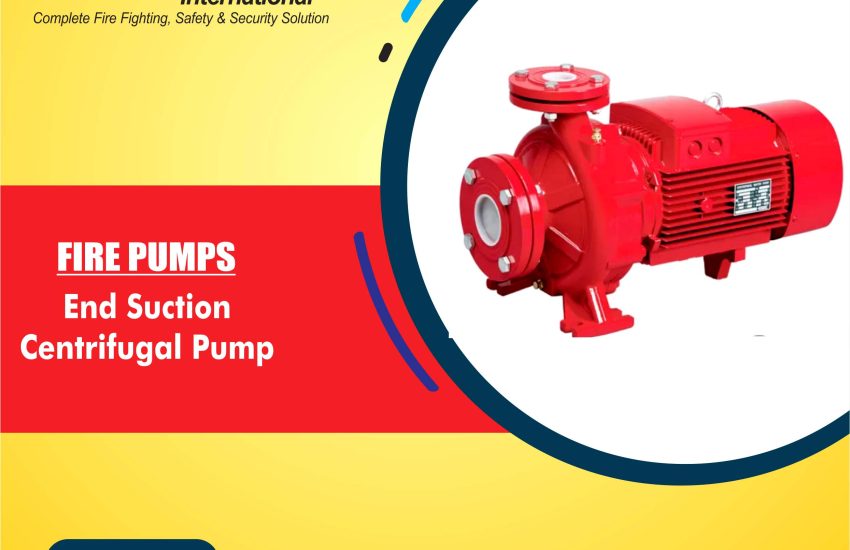End Suction Centrifugal Pump is one of the most popular pumps used across various industries like water supply, HVAC systems, chemical processing, and agriculture. These pumps are efficient, versatile, and simple to maintain. This guide will explain the key features, benefits, applications, and maintenance tips for end suction centrifugal pumps.
What is an End Suction Centrifugal Pump?
An end suction centrifugal pump uses centrifugal force to move liquids. The suction port is located at the end of the pump, giving it a compact and efficient design. The rotating impeller accelerates the liquid, creating centrifugal force that pushes the liquid out of the discharge port at high pressure.
How Does an End Suction Centrifugal Pump Work?
The operation of an end suction centrifugal pump follows these steps:
- Liquid Intake: Liquid enters the pump through the suction port.
- Impeller Action: The pump’s impeller rotates and transfers energy to the liquid.
- Centrifugal Force: The impeller creates centrifugal force, pushing the liquid toward the outer edge of the pump casing.
- Liquid Discharge: The liquid exits the pump through the discharge port at high pressure.
Key Features of End Suction Centrifugal Pumps
- Compact Design: The end suction design allows the pump to be smaller and easier to install.
- Versatility: These pumps can handle a wide range of liquids, including water, chemicals, oils, and slurries.
- Ease of Maintenance: The pump’s simple design makes it easy to service and maintain.
- Single Stage Operation: Most end suction pumps operate as single-stage pumps, making them ideal for moderate pressure and flow needs.
- Durable Construction: End suction pumps are made from materials like cast iron or stainless steel, which ensures they last longer.
Advantages of End Suction Centrifugal Pumps
- High Efficiency: These pumps deliver reliable performance by efficiently moving liquids at high flow rates.
- Cost-Effective: End suction pumps are generally more affordable than other pump types, making them ideal for budget-conscious projects.
- Ease of Installation: Their compact design simplifies installation, whether in new or existing systems.
- Low Maintenance Requirements: These pumps require less maintenance, thanks to their simple design and fewer moving parts.
- Wide Range of Applications: These pumps serve various industries, including water treatment, agriculture, and chemical processing.
Applications of End Suction Centrifugal Pumps
End suction centrifugal pumps are versatile and used across multiple industries, including:
- Water Supply: These pumps provide reliable water circulation for municipal and industrial applications.
- Agricultural Irrigation: They are essential for transferring water to irrigate crops efficiently.
- HVAC Systems: End suction pumps circulate water in heating, ventilation, and air conditioning systems.
- Chemical Processing: These pumps handle various chemicals, making them suitable for industrial applications.
- Fire Protection: In fire suppression systems, end suction pumps ensure a steady water supply to sprinklers and hydrants.
Maintenance Tips for End Suction Centrifugal Pumps
To maintain the performance of your pump, follow these essential maintenance steps:
- Check the Impeller: Inspect the impeller regularly for damage or wear. A damaged impeller will reduce pump efficiency.
- Lubrication: Keep the bearings and other moving parts well-lubricated to prevent friction and wear.
- Inspect Seals: Look for any leakage in the mechanical seals and replace them if necessary to avoid fluid loss and maintain pump efficiency.
- Clean the Pump: Keep the pump casing and intake area free from debris to prevent blockages.
- Monitor Vibration: Excessive vibration could indicate alignment issues or an imbalanced impeller. Address these problems immediately to avoid further damage.
Factors to Consider When Choosing an End Suction Centrifugal Pump
Selecting the right pump is essential for optimal performance. Consider the following factors:
- Flow Rate: Choose a pump that can handle the required flow rate for your system (measured in GPM or LPM).
- Head Pressure: Ensure the pump can meet the required head pressure for your application, whether horizontal or vertical.
- Liquid Properties: Make sure the pump material can handle the specific liquid type you plan to pump, whether it is corrosive or viscous.
- Power Supply: Consider whether you need an electric or diesel-powered pump depending on power availability and operating conditions.
- Pump Efficiency: Select an energy-efficient pump to reduce operational costs and improve long-term performance.
Conclusion
End Suction Centrifugal Pump are widely used due to their efficiency, versatility, and cost-effectiveness. Their simple design makes them easy to install and maintain. Whether you need to move water for irrigation, chemicals for processing, or fluids for HVAC systems, an end suction centrifugal pump is a reliable solution. By understanding their key features and maintaining them properly, you can ensure long-term, reliable performance.


